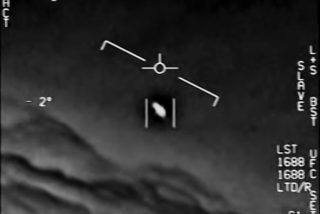UCI Professor Recalls ‘Best Job Ever Invented’
- Share via
One of the things Allen R. Stubberud thought he should do as the Air Force’s chief scientist was to check out--first-hand--how the F-16 fighter jet worked.
So Stubberud spent an hour in the back seat of an F-16 as it shot across the desert near Las Vegas at 540 knots, 100 feet from the ground.
“It felt like you could reach out and scratch the ears of the jack rabbits,” Stubberud recalled.
Now back at his electrical engineering professorship at UC Irvine, Stubberud, 51, was chief Air Force scientist from February, 1983, to February, 1985. It is, he said, “probably the best job ever invented.” Although it is a civilian job, it carries the equivalent rank of a three-star general and, Stubberud said, “almost carte blanche to investigate any scientific and technical issue that interested me. It’s a job that is specifically designed to bring in someone who is not a blue suiter (uniformed member of the Air Force) and will give the Air Force a fresh point of view. I had access to just about anything I wanted to look at.”
Stubberud said he cannot discuss many of the projects he worked on during his two years with the Air Force.
He can say that he recommended new areas of research that the Air Force’s 23,000 engineers and scientists should pursue, and he proposed different strategies for conducting current research.
One of Stubberud’s recommendations was that the Air Force put more emphasis on biological engineering. The other branches of the armed forces, Stubberud said, already have large programs in biological engineering.
“The definition of bioengineering varies depending on the eye of the beholder. The Air Force looks on bioengineering and biotechnology as a means of designing better cockpits, making them user-friendly. On our campus, we’re about ready to start a bioengineering program, and we would look at it as the application of engineering principles to the generation of biological materials. “
Stubberud said “there was a lot of skittishness at that suggestion because many people feel biological science is another way of saying germ warfare. But there are a number of applications for biological science besides that.”
Kevlar, the material used to make bulletproof vests, is a good example, Stubberud said. Currently, a Teflon-coated bullet can pass through the weave of a Kevlar vest. But, Stubberud said, if scientists could create the Kevlar weave at a molecular level, “you’d need molecule-sized bullets to get through the vest.”
Or, Stubberud said, Kevlar could be woven to create “bomb blankets” to protect soldiers in the field or to create curtains that would protect against sniper fire.
Although Stubberud thought he could stay another year at his job in Washington, he missed his home and family in Irvine. And, he said, “when you start defending the blue suiters, you know it’s time to go.” In his final report, he told his superiors that the Air Force’s 250,000 civilian employees--14,000 of whom are scientists and engineers--are “orphans.”
Citing the lack of any advocate for the civilian point of view in the Air Force’s upper echelons, Stubberud said, “morale is not as high as it could be. The laboratory system could be more effective if the management strategy changes.”
He also said that some research being done by the different branches of the armed forces could be consolidated, but other research applies only to one branch. The Air Force, for example, would not have much use for the Navy’s underwater research.
“If I were in (Defense Secretary Caspar W.) Weinberger’s shoes, I might propose some consolidation, but to arbitrarily throw everything together would not be a good idea.”
Some Charges False
Stubberud said that, in many instances, the charges of waste leveled by Congress at the Pentagon are false. “First, it costs more to build something for an airplane because it must be built to precise specifications and it needs to be tested to make sure it meets those specifications. And if you sell something to the military, you need to keep meticulous records for when the auditors come around. That’s how a coffee maker for an airplane can cost $7,000.”
Another reason for the charges, Stubberud said, is the number of congressional staffers.
“There are 20,000 staffers and each one feels a need to justify their job. The Pentagon is used by Congress as a lightning rod. If you want to make an issue back home, attack the Pentagon. There’s every bit as much fraud, waste and abuse in the rest of the government as there is in the Pentagon. In fact, there might be less in the Pentagon because they get all that congressional scrutiny.”
Stubberud cited an item the Air Force eliminated from its budget as unnecessary. Then, $80 million for that item (which Stubberud would not reveal) appeared in Congress’s version of the Air Force budget.
“Some congressional staffer must have felt we needed $80 million,” Stubberud said. The Air Force told Congress it didn’t need the money for that item, Stubberud said, but ended up having to accept $40 million anyway.
In evaluating the impact of his recommendations to the Air Force, Stubberud compares himself to a flea attacking an elephant.
“I made a lot of suggestions and may have caused a little discomfort. But they can always choose to ignore me.”






